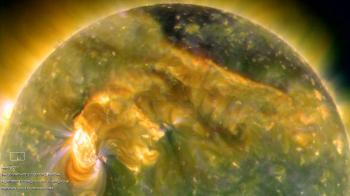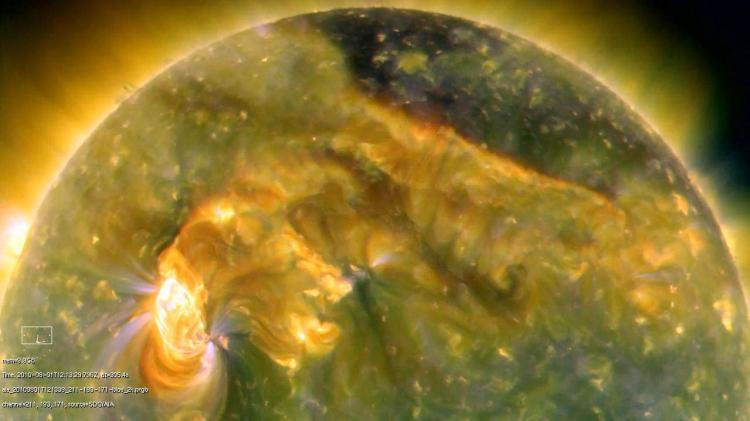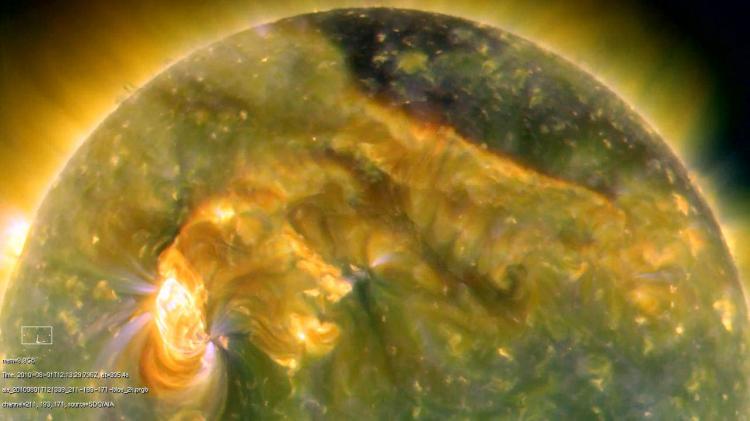A “solar tsunami” eruption of plasma on the surface of the sun will lead a shower of ionized atoms to strike the Earth Tuesday or Wednesday night. The sun, which is approximately 108 times the size of the earth, is just waking up from a period of record-breaking inactivity during an 11-year cycle set to peak in 2013.
Earth orbiting satellites detected that nearly the entire Earth-facing side of the sun erupted on Aug. 1 in a series of C-class solar flares, propelling one or possibly two coronal mass ejections (CMEs).
Rising from sunspot 1092, the solar flares may have a noticeable consequences on Earth aside from auroras being visible farther south than usual.
The CME clouds, usually emitted from the sun over several hours, can carry up to 10 billion tons of plasma. They usually move away from the sun at about a million miles per hour, allowing them to travel 93 million miles to Earth in only three to four days, according to a NASA press release.
Once they arrive at the Earth, they interact with the planet’s magnetic field. This may lead to a geomagnetic storm.
Forecasters from the National Oceanic and Atmospheric Administration estimated a 10 percent chance of major geomagnetic storms and a 45 percent chance of some geomagnetic activity once the CMEs arrive on Aug. 3 and 4.
Skywatchers in the northern United States and other countries should look north for a dancing celestial show of green and red lights.
The Sun goes through a regular activity cycle about 11 years long, according to NASA. The last solar time solar activity peaked was in 2001 and its recent period of activity was particularly quiet and long.
“These kinds of eruptions are one of the first signs that the Sun is waking up and heading toward another solar maximum expected in the 2013 time frame,” said NASA.
Solar flares and CMEs vary in strength and in impact on Earth’s magnetic field. They are highly radioactive, although humans are protected from this radiation by the atmosphere. What suffers is technology. The heat from them can damage satellites, and x-rays can disturb radio communications.
In a report published two years ago by the National Academy of Sciences titled “Severe Space Weather Events—Societal and Economic Impacts,” researchers predicted that our sophisticated technology is vulnerable to a severe solar storm. In a worst case scenario, developed countries with high-tech cities could face blackouts and devastating financial costs 20 times higher than the economic damage caused by Hurricane Katrina.






